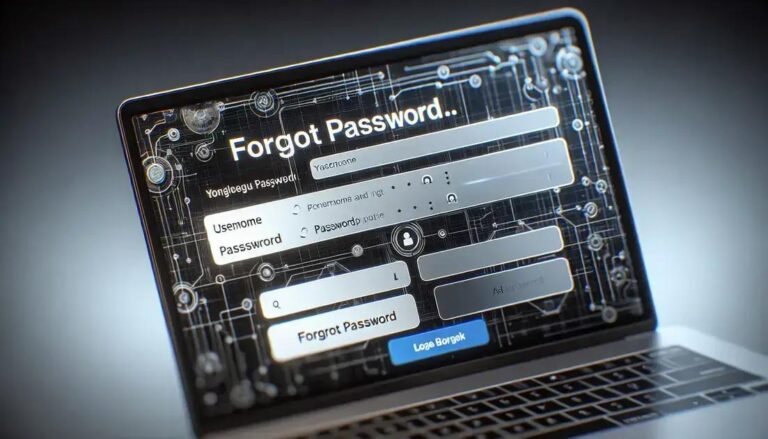Recover Email – No Access to Your Email? Learn How to Restore Messages and Login
Have you ever lost an important email and felt that pang of regret? **Recover Email** offers a lifeline for those messages you thought were gone for good. Whether it slipped into the void or got unintentionally deleted, there’s hope on the horizon.
Emails often hold critical information, be it from work or personal connections. Learning how to **recover email** can save you time and stress, ensuring that crucial data is never truly out of reach. Let’s dive into some simple yet effective techniques to get those messages back.
Imagine the relief of having an old conversation pop back into your inbox. With a few straightforward steps, you can make it happen. Stay with me, and let’s unravel the mystery behind email recovery.
Understanding Email Recovery Options
In the digital age, losing an email can feel like losing a part of your personal or professional history. Understanding the various email recovery options can save you time and stress. Let’s explore some of the most common methods you can use to retrieve lost messages.
1. Check the Trash or Spam Folder
When emails vanish, the first step is to check the Trash or Spam folders. Many email clients like Gmail and Outlook often automatically sort emails into these folders based on specific criteria. Use the search tool to quickly locate lost messages.
2. Use the Email Provider’s Recovery Tools
Most email providers offer built-in recovery tools. For instance, Gmail has a ‘Training’ mode that can restore messages within 30 days of deletion. Check with your provider for available recovery options and time limits.
3. Contact Technical Support
If you cannot find the email through standard methods, contact your email provider’s technical support. Be prepared to provide details like the approximate date and time the email was lost to expedite the process.
4. Backup and Archiving Habits
Prevention is key. Regularly backing up your emails or using an archiving solution can make recovery easier. Services like Google Takeout allow you to download your data periodically, safeguarding against loss.
Step-By-Step Email Retrieval Guide
Conteúdo não disponível
Common Mistakes During Email Recovery
When attempting to recover lost emails, users often make some common errors that can hinder the process. Being aware of these mistakes can help you avoid them and increase the chances of successful recovery.
1. Not Checking All Folders
One frequent mistake is failing to search thoroughly through all available folders, such as Archives and Spam. Emails may be misclassified, hindering manual searches and automated recovery efforts.
2. Ignoring Filter and Label Settings
Email accounts often have filters and labels configured that can reroute messages to unexpected locations. Review these settings regularly to ensure important emails land in the inbox where you expect them.
3. Deleting Emails Without Backup
Accidental deletion without a backup plan can lead to permanent loss. Ensure your email client or provider is configured to back up your emails regularly, offering redundancy in case of accidental deletions.
4. Delay in Triggering Recovery Actions
The more time passes, the harder it becomes to recover emails. Most services offer limited windows for recovery. Act promptly when emails are lost to maximize recovery chances within provided timeframes.
5. Overlooking Email Provider’s Support
Many users attempt to resolve issues on their own without consulting available support channels. Contacting technical support early in the process can provide guidance and access to advanced recovery options not readily available to users.
Tips For Securely Storing Retrieved Emails
Once you successfully recover your emails, ensuring they are stored securely is essential to prevent future loss. Implementing the following tips can safeguard your retrieved emails and maintain privacy.
1. Use Email Encryption
Encrypting your emails adds an extra security layer. Many email services offer built-in encryption tools. Enable these features to protect the content from unauthorized access.
2. Regular Backups
Establish a routine to back up your emails. Use third-party apps or services to create local or cloud backups. Regular backups prevent loss in case of account issues.
3. Organize with Folders and Labels
Organize retrieved emails using folders and labels. This approach makes it easier to locate important emails quickly and reduces the risk of accidental deletions.
4. Secure Access with Strong Passwords
Make sure your email account is protected with a strong, unique password. Avoid common words and include a mix of letters, numbers, and symbols. Updating passwords regularly further enhances security.
5. Activate Two-Factor Authentication
Enable two-factor authentication (2FA) for an added layer of security. This requires a second verification step, often a text message or authentication app, for login attempts.
FAQ – Common Questions About Email Recovery and Storage
What should I do first when I lose an email?
Check your Trash and Spam folders first, as emails might be automatically sorted there.
How can I prevent losing important emails in the future?
Regular backups and organizing your emails with folders can help prevent future losses.
What is two-factor authentication and how does it help?
Two-factor authentication adds an extra layer of security by requiring a second verification step for login attempts.
Why should I encrypt my emails?
Email encryption protects the content from unauthorized access by scrambling the information.
How can I retrieve emails that are not in the Trash folder?
Check if your email service provider has a backup or recovery tool, or contact their support for further assistance.
What is a strong password, and why is it important?
A strong password uses a mix of letters, numbers, and symbols and helps prevent unauthorized access to your email account.






